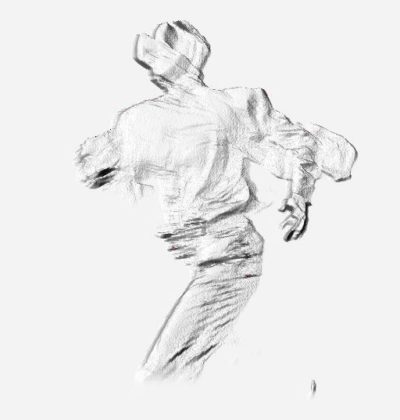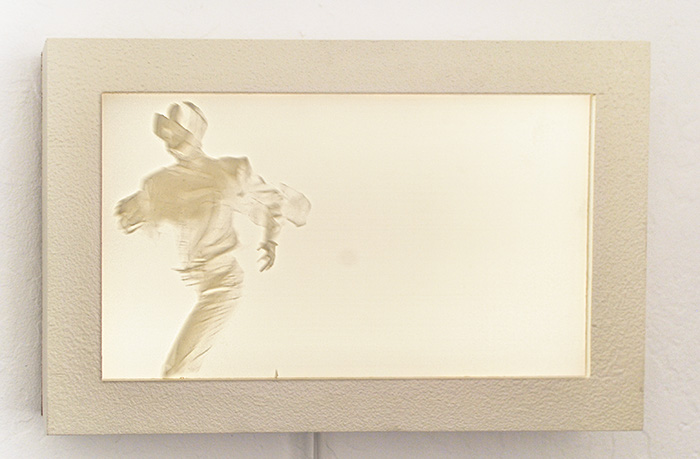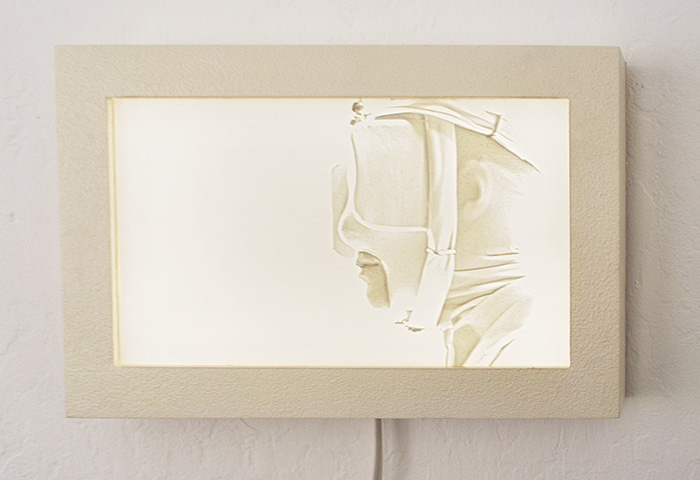All images and designs are copyrighted and not for use.


While a freelance 3D modeler, I collaborated with a multimedia artist who was interested in 3D printed art. She sent me these photos from a performance piece she had done and asked if they could be 3D printed. Perhaps she hoped I could turn them into bas relief, like the friezes atop a Grecian temple. While there may be a simple way to create this from a photo, I'm afraid I don't know it. I did, however, know about lithophanes.
 Like a bas relief, lithophanes still rely on raising and sculpting of a flat surface to create an image with the light and shadow. Bas relief creates a flatter version of the actual shapes: a face is face shaped, a ball is rounded, etc. In contrast, a lithophane is formed by the relative tones of the object, which a computer can easily extract from a photo. The darker areas are thickened, and the lighter areas thinned regardless of the objects original shape. When printed, this can sometimes look confusing until a light is shined through the back and the image is recreated.
Like a bas relief, lithophanes still rely on raising and sculpting of a flat surface to create an image with the light and shadow. Bas relief creates a flatter version of the actual shapes: a face is face shaped, a ball is rounded, etc. In contrast, a lithophane is formed by the relative tones of the object, which a computer can easily extract from a photo. The darker areas are thickened, and the lighter areas thinned regardless of the objects original shape. When printed, this can sometimes look confusing until a light is shined through the back and the image is recreated.
While I intended to use Rhino's "Mesh Heightfield" tool, I quickly found a Processing Script that would automate the whole procedure. It took a photo and a few variables as input, and generating an .stl file for printing. I should clarify that while I did not write the processing script, I did manipulate the input variables within the code to help achieve the results the artist was looking for. When she saw the first prototype, she was intrigued by the effect, and decided to enlist a fabricator to make light boxes to mount them inside. I worked with the fabricator to coordinate the attachment of the pieces to the boxes, adjusted the thickness variables in the script, and cleaned up the input images to take full advantage of the effect. Here are the final 3D printed pieces mounted inside the custom built light boxes.

